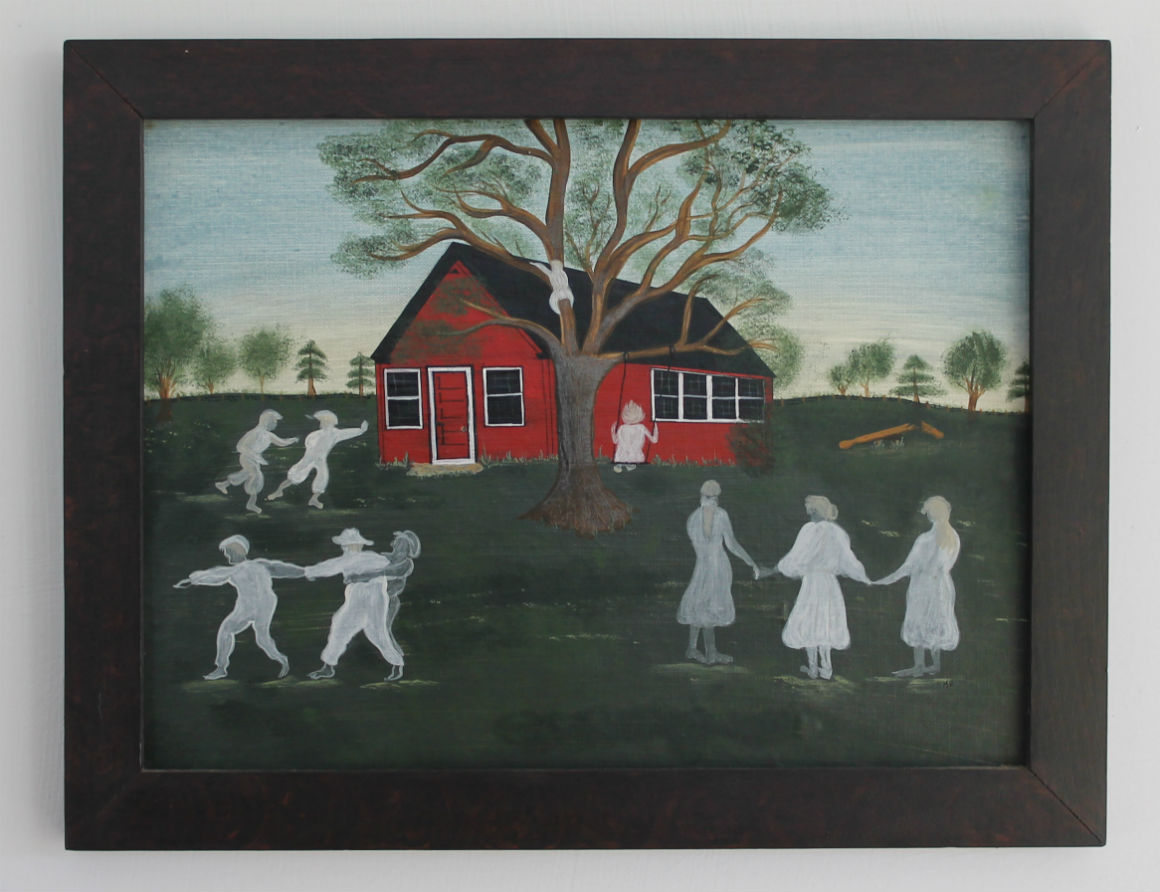Dr. Eleanor McQuillen’s Crime-Scene Painting A Memorial to Lives Tragically Unrealized
“Oh great. Another birthday, another crime scene painting. What the????” These were my thoughts as I unwrapped this painting, and I am guessing I am voicing your surprise. Where is that straight-from-the-windshield perspective used in the first two paintings? The ghost-like children playing in front of a one-room schoolhouse is more symbolic than literal. My mother explained on a note on the back of the painting, “This picture is dedicated to all the children of Vermont who have died violently…and preventably!”
As this label attests, the death of a child always had special significance to my mother. It was actually the death of a teenage boy that initiated her interest in forensic pathology. In that case two boys were sniffing glue in the woods. One boy passed out. As the second boy looked down at his unconscious friend, he, as court records later established, thought back to a similar incident when he had gone for help. In that instance, the father of the unconscious boy became enraged that the authorities had been notified and beat the boy who had gone for help. With this memory still fresh in his now-altered mind, the friend decided on an alternate course of action and buried his friend. My mother, then a hospital pathologist, was asked to figure out if the boy was dead before he was buried (accidental death) or if he had suffocated when he was buried (homicide). The implications for the remaining boy were extreme. (The findings established that the victim had died before he was buried.) Through this case, my mom had found a new purpose to her career.
She gave voice to that purpose years later in another child-related death. In 1981, 16 year-old Louis Hamlin and 15 year-old John Savage brutally murdered 12 year-old Melissa Walbridge and left for dead her friend Meghan O’Rourke. When my mom prepared to present her findings to the jury in this highly publicized court case, she explained, “You have heard a lot of testimony in this case, but there is one witness you have not heard from, Melissa Walbridge. I’m here to help her tell her story.”
Next week’s crime scene painting is a collaboration between my mom and Grant Wood in Haste Makes Waste.
Adopt a detective’s perspective when looking at this painting and use three simple questions to frame a class discussion.
- What is going on in this picture?
- What do you see that makes you say that?
- What more can we find?
Decide if and when to share the title of the painting as it may guide, or overly influence, the way students view the work. You will also need to decide if it is beneficial to share the back story that this is a crime scene painting and is painted by one of the crime scene investigators for her child as a way to share life’s thoughts and lessons.
Carefully consider if this is appropriate subject matter for your audience. While this image could inform some class discussions, the death of a child can be an especially emotional topic.

